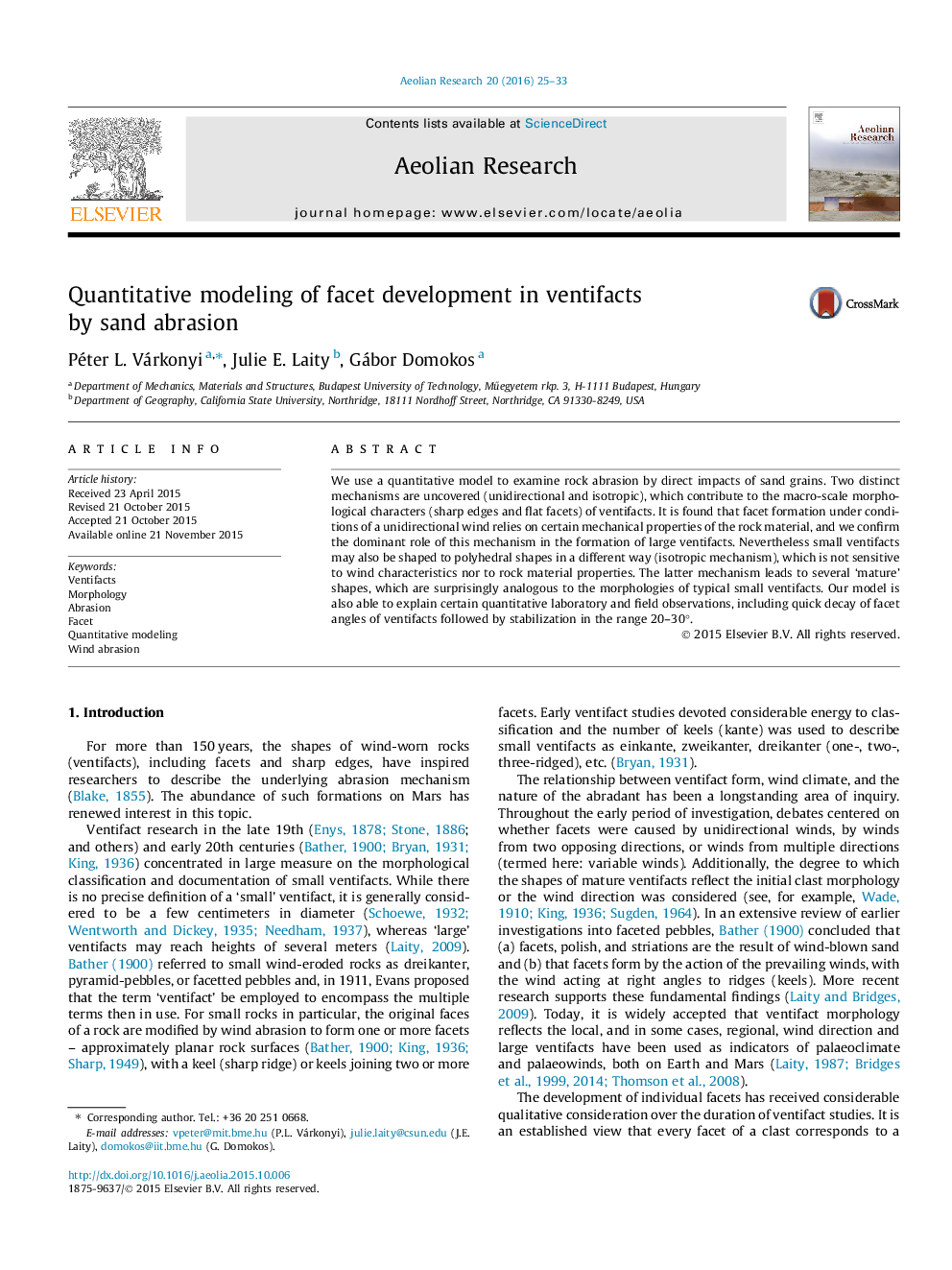| Article ID | Journal | Published Year | Pages | File Type |
|---|---|---|---|---|
| 6426245 | Aeolian Research | 2016 | 9 Pages |
â¢A quantitative model of ventifact abrasion is proposed.â¢The model integrates material susceptibility and wind characteristics.â¢Two distinct mechanisms of facet and edge formation are uncovered.â¢The model predicts three mature ventifact shapes, analogous to field observations.â¢The stabilization of facet angles in the range 20-30° is explained.
We use a quantitative model to examine rock abrasion by direct impacts of sand grains. Two distinct mechanisms are uncovered (unidirectional and isotropic), which contribute to the macro-scale morphological characters (sharp edges and flat facets) of ventifacts. It is found that facet formation under conditions of a unidirectional wind relies on certain mechanical properties of the rock material, and we confirm the dominant role of this mechanism in the formation of large ventifacts. Nevertheless small ventifacts may also be shaped to polyhedral shapes in a different way (isotropic mechanism), which is not sensitive to wind characteristics nor to rock material properties. The latter mechanism leads to several 'mature' shapes, which are surprisingly analogous to the morphologies of typical small ventifacts. Our model is also able to explain certain quantitative laboratory and field observations, including quick decay of facet angles of ventifacts followed by stabilization in the range 20-30°.
